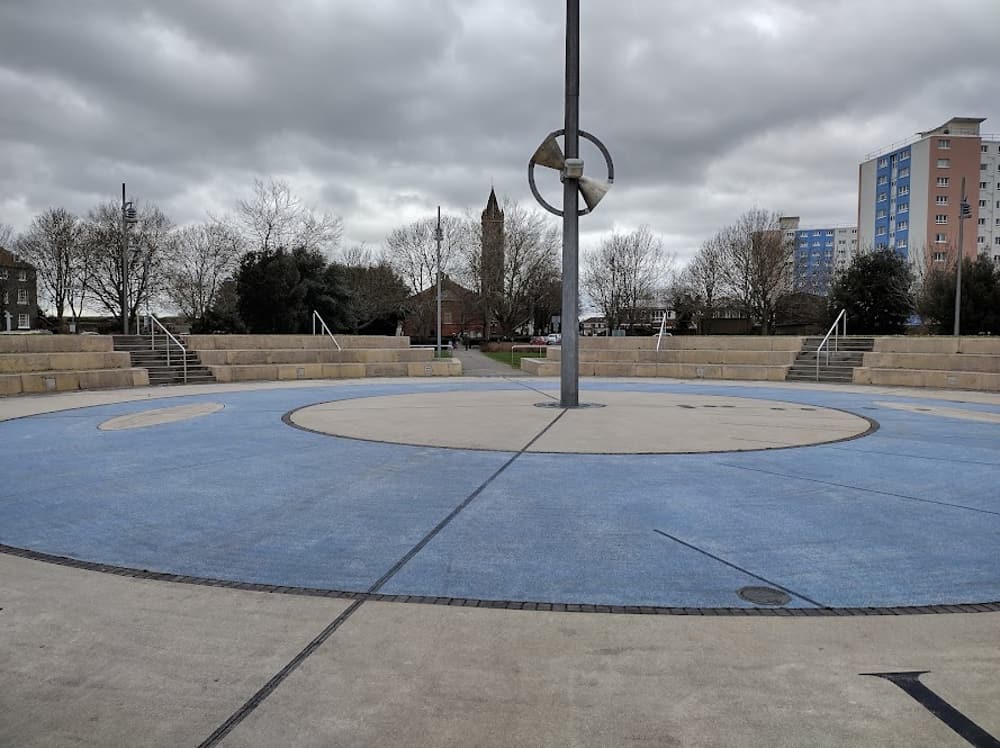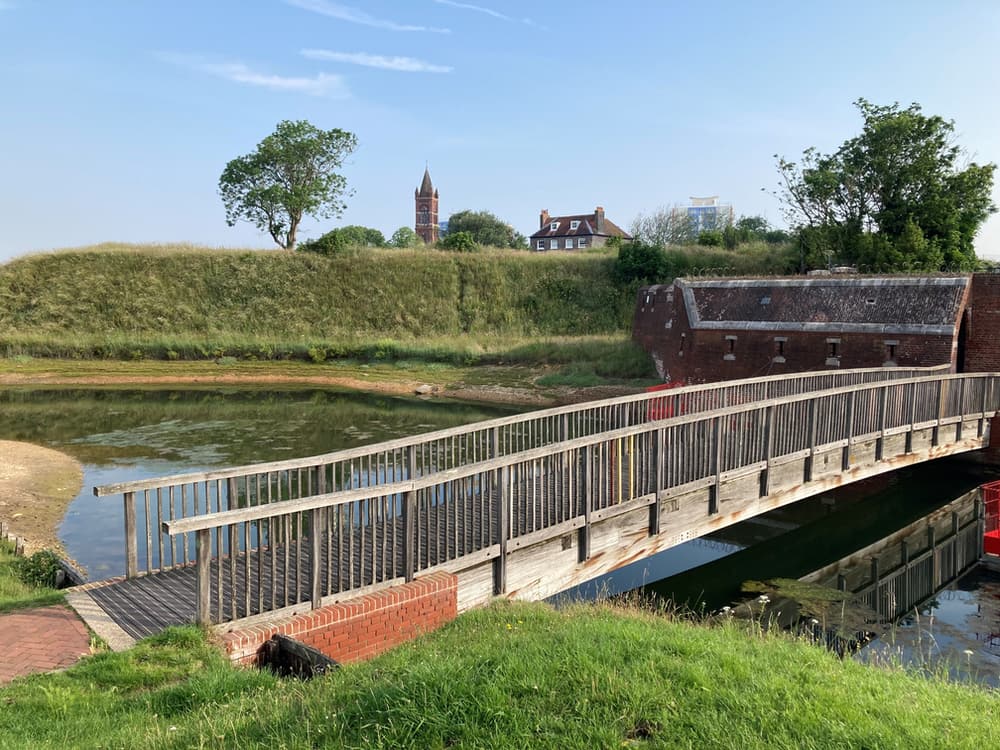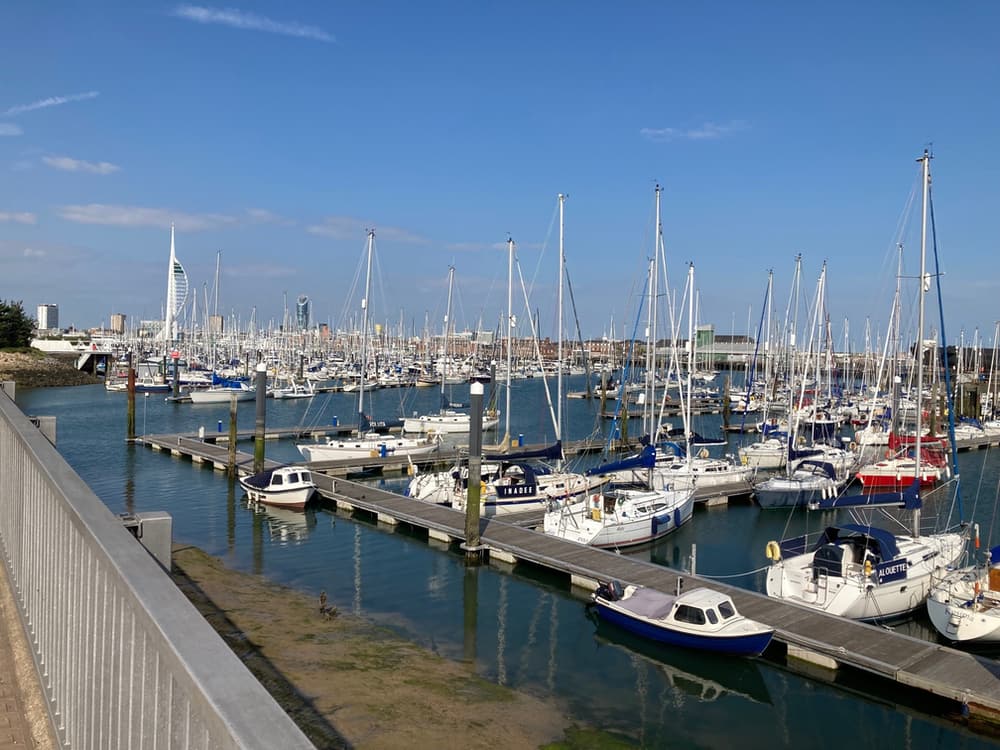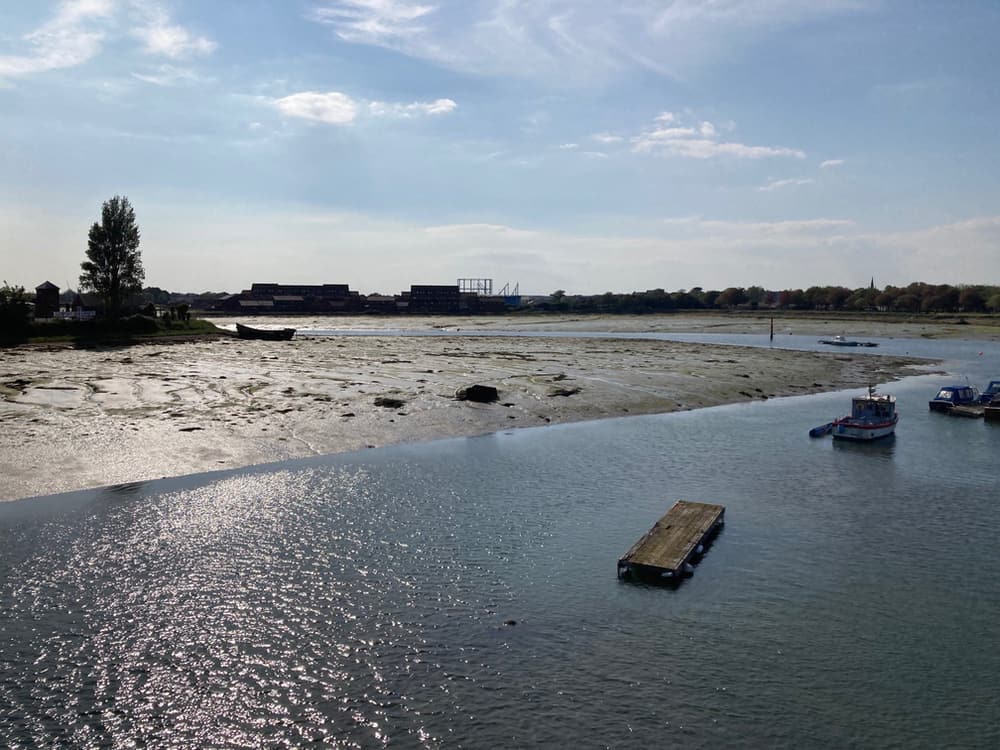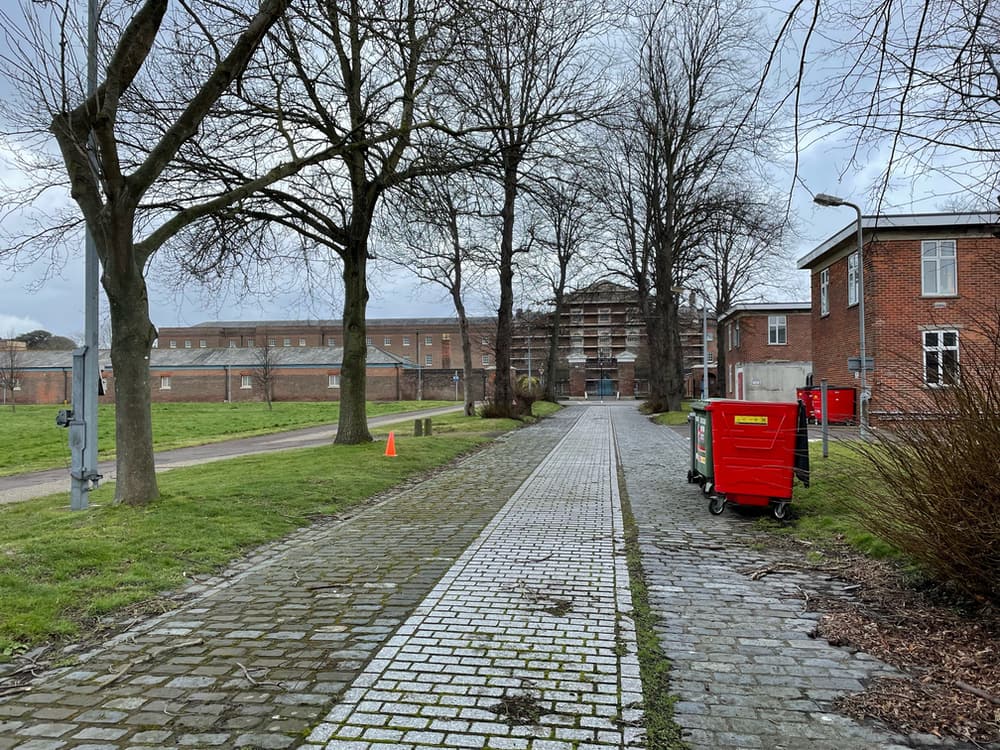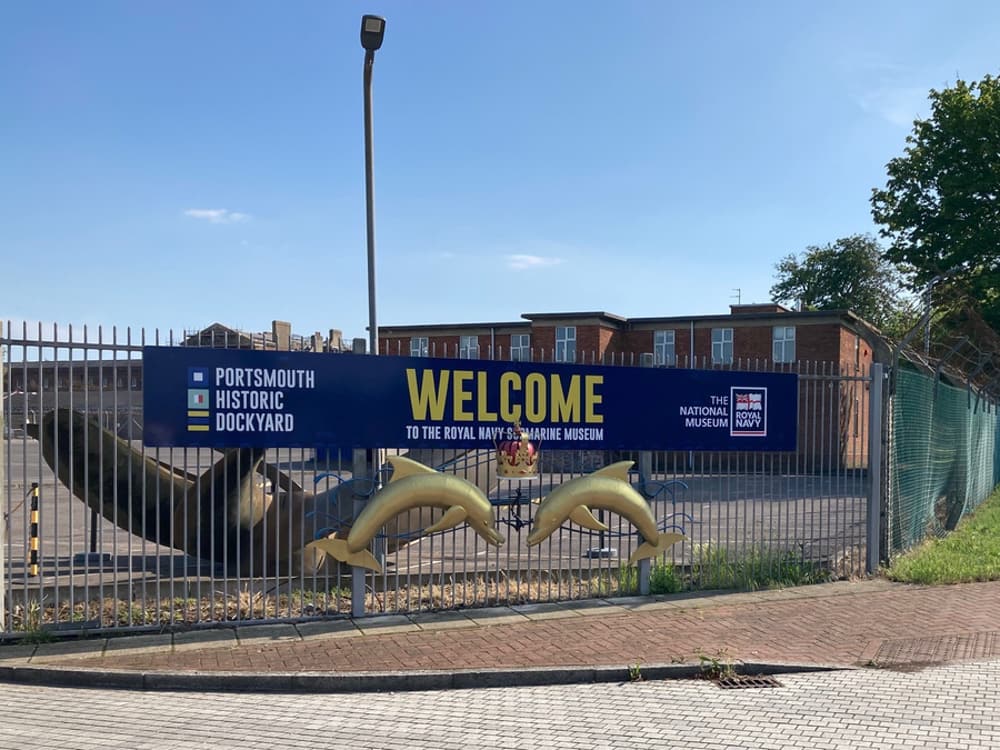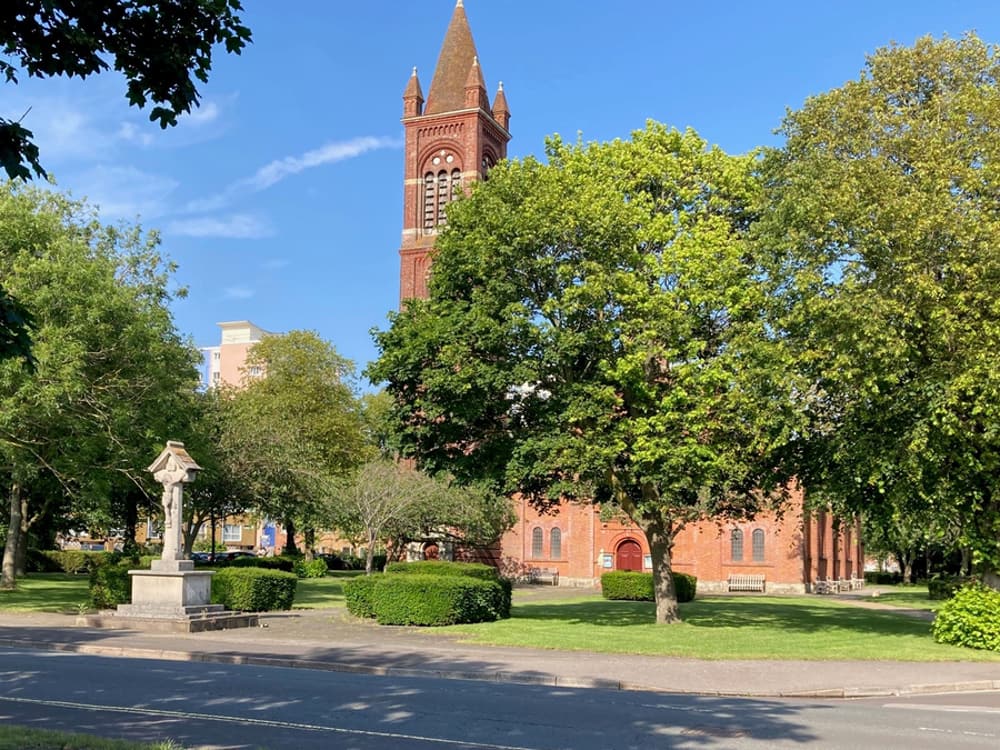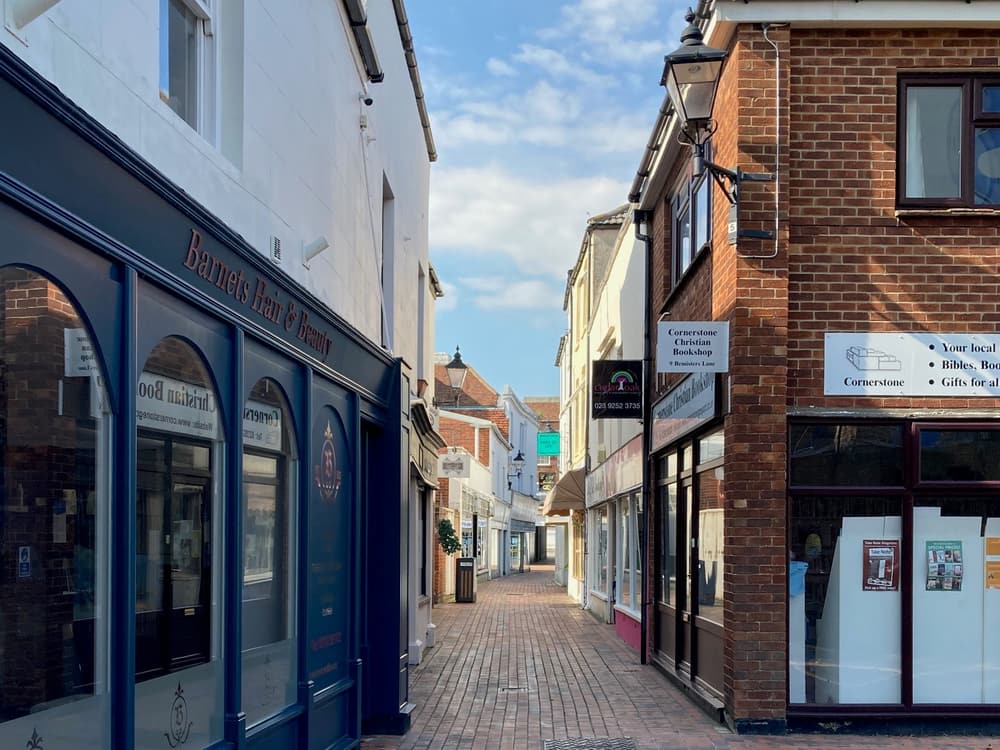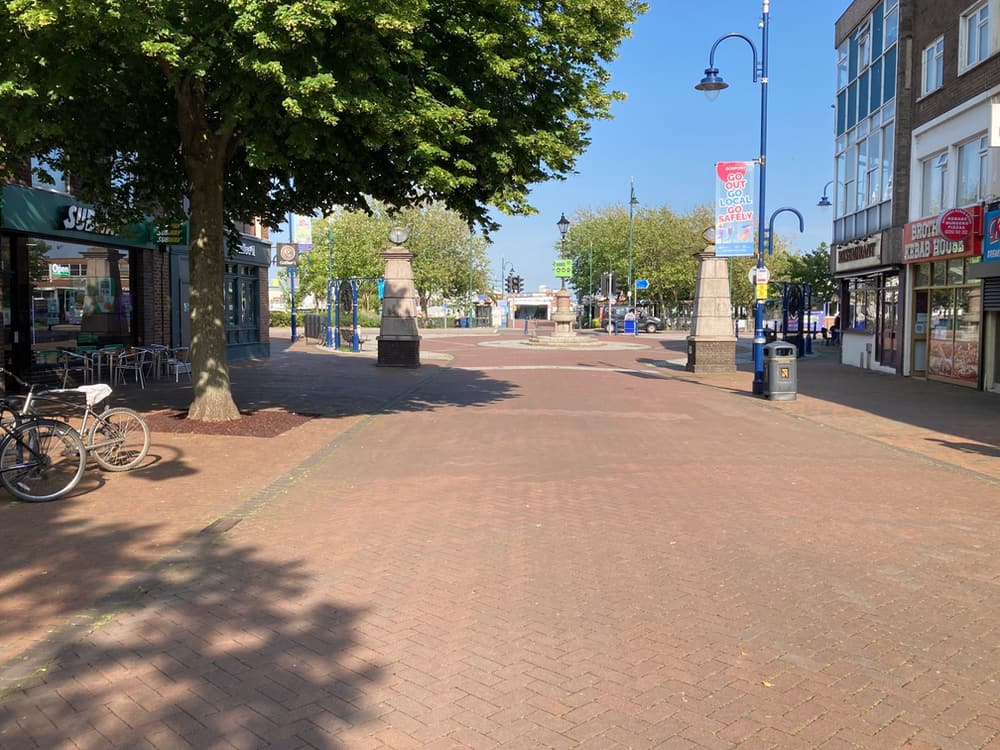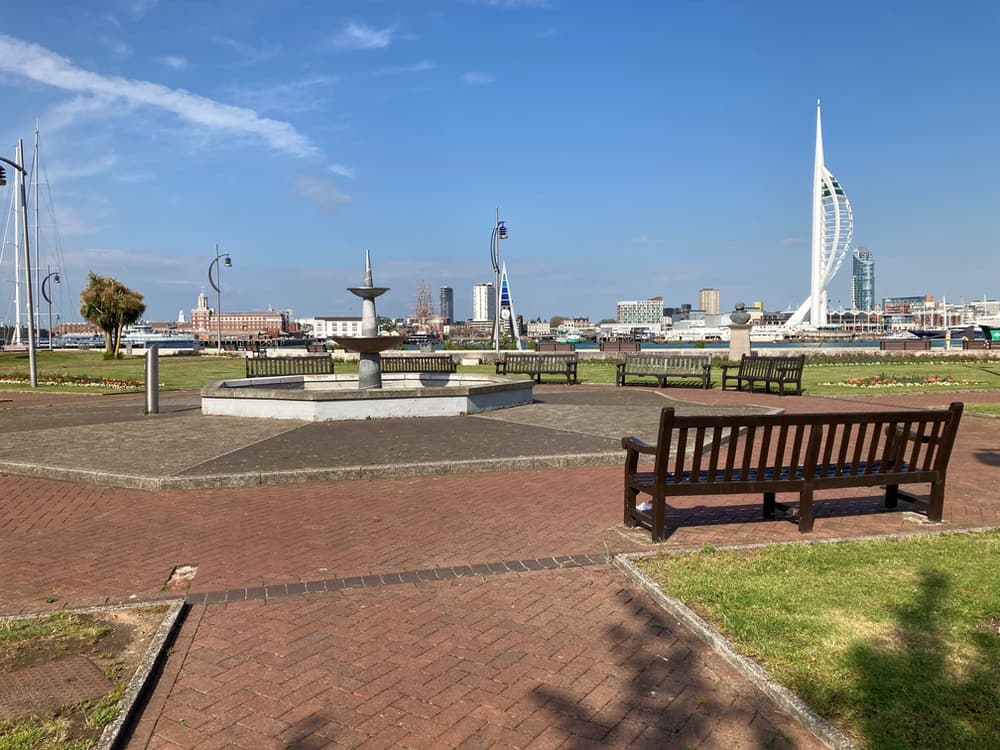Points of Interest …
1) Gosport Ferry used to be a chain-linked ferry and floating bridge, which also served as a defence.The Timespace was inspired by Albert Einstein’s theory of relativity and his time space cone diagram. The location of the Timespace is on both a physical and spiritual line from Holy Trinity Church in Gosport to Portsmouth Harbour. The central mast serves as a sundial, casting a shadow on the ground, and around the perimeter is a paved mosaic, which depicts events and characters from Gosport’s maritime past.
2) Built in 1802/3 as protection to Haslar gate, Trinity Bation contains a capanier with gun slits and also houses sluice gates. Right up until the early 20th Century, Gosport was a fortified town, and this is just one of the remnants of this time. Work is currently ongoing to restore this area so that visitors can at some point walk around this historic feature.
3) Haslar Marina is now one of the largest marinas in the area, and can hold 700 boats. It was constructed in 1993 as demand for berths in the Solent increased. Look out for the green Trinity Lightship, which is now a place to sit and enjoy the view and also serves food and drinks.
4) The Haslar Bridge you walk over today is the fifth bridge to be built in this location. The first collapsed and the second was a toll bridge but was bombed during World War II. The nickname ‘pneumonia bridge’ came about when the bridge was rebuilt as a pedestrian bridge only, but was so high (to allow ships to pass underneath) that you would take a blast from the cold winds as you walked across. The current bridge was built in 1979 and is a traffic light-controlled single-carriageway bridge.
5) HMS Hornet closed in 1956, but during World War II it had a huge part to play in the build up to D-Day. HMS Hornet was the centre for naval coastal craft including Motor Torpedo Boats (MTBs) and Fast Patrol Boats (FSBs). As you walk past Haslar Hospital, you pass a magnificent building steeped in history, and in use until 2009. When it was built in 1760, it was the largest brick built building in Europe, and could accommodate up to 2,000 sailors. Before it closed in 2009 as the last military hospital, it served civilians as well as military personnel.
6) HMS Dolphin was the name for the Royal Navy shore establishment sited at Fort Blockhouse in Gosport and was the base for the submarine service from 1904-1999. The 100-foot submarine Fort Blockhouse was built on the Gosport side of the harbour in the early 1430s on the authority of Henry VI. In the late 1400s, the defence was upgraded to include 5 guns, and in the late 1530s, the blockhouse was replaced by an 8-gun battery under the orders of Henry VIII. The first firing of the guns is believed to have been during the English Civil War, with the guns aimed at Southsea Castle after Parliamentary troops had captured it. Instead of hitting its target, the cannonball landed in St Thomas’ Church (Portsmouth Cathedral). The fort has changed and been upgraded numerous times but was considered obsolete in 1859.
7) As you walk past Bastion No. 1, you will be able to see the restoration efforts, to try and restore the ramparts here. There are plans to reopen it to the public so take a look at the gate for opening times. If you wish to walk around the outside of Holy Trinity Church, Vicarage and Green, you will see a Jacobean building dating from the late 1690s. The Vicarage was used during the Napoleonic War as the Headquarters for the Royal Engineers. Inside the church is an organ used by the famous composer Frideric Handel, and the Bell Tower was added in 1887 to commemorate Queen Victoria’s Golden Jubilee.
8) Bemister’s Lane is a lovely quaint lane linking South Street with the High Street, but in years gone by this used to be known an ‘Pressgang Alley’ where the press gang men used the many taverns to recruit (seize) men to join the Navy for the King’s Shilling during the 18th and 19th Centuries. Look out for the blue plaque along the alley.
9) Gosport High Street certainly has a lot of history and historical buildings along it. In the 18th Century, Gosport had three main roads, the middle of which is now the High Street. A building on stilts called Market House was situated here; the Council met in the building and a market was held underneath. Many buildings are listed along the High Street, so look out for the plaques and intricate details. At the top of the pedestrianised part of the High Street (if you turned left rather than right) is the home of Gosport Museum, Gallery and SEARCH. The building has formerly been used as a library and grammar school and is currently undergoing a major redevelopment (reopening Spring 2022).
10) Falkland Gardens (formerly Ferry Gardens) was established in the mid-1920s from land reclamation and infilling from the dismantled ramparts. The gardens were renamed in commemoration of the fleet and troops that sailed from Portsmouth to the Falklands in 1982 and the large mosaic within the gardens also commemorates this. Look now for the Tide Clock which denotes the tide in the Harbour, funded by the Gosport Ferry. The ferry has been operating in some form since the 16th Century and is still the quickest way to Portsmouth.

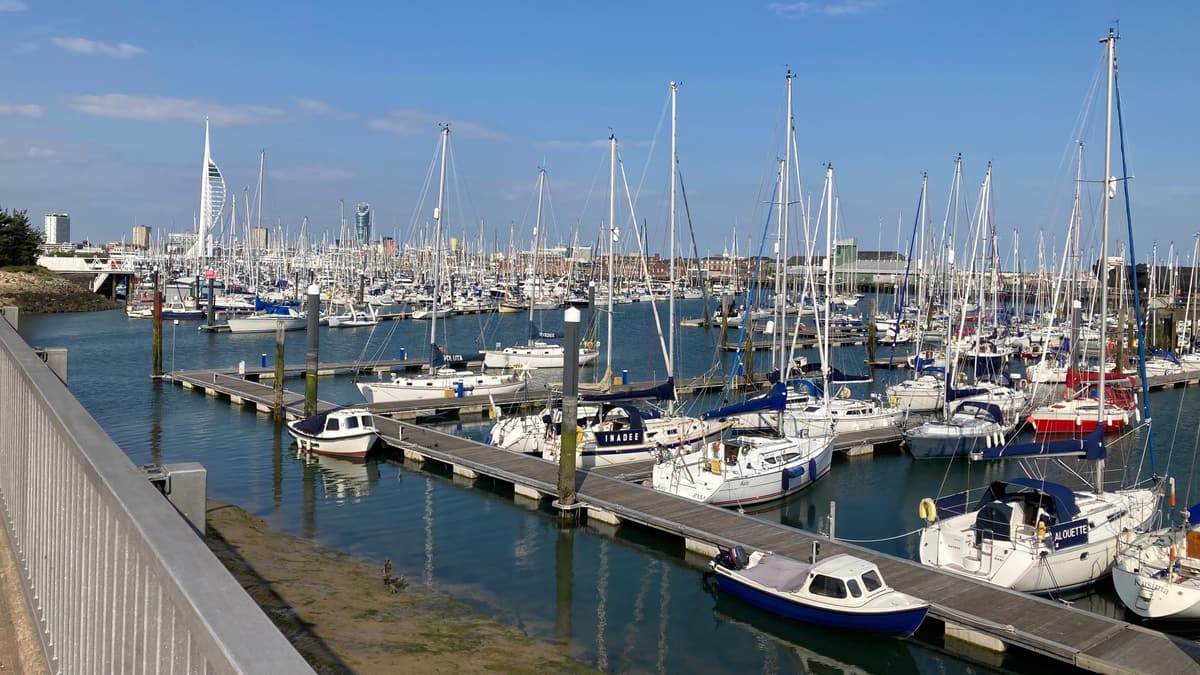
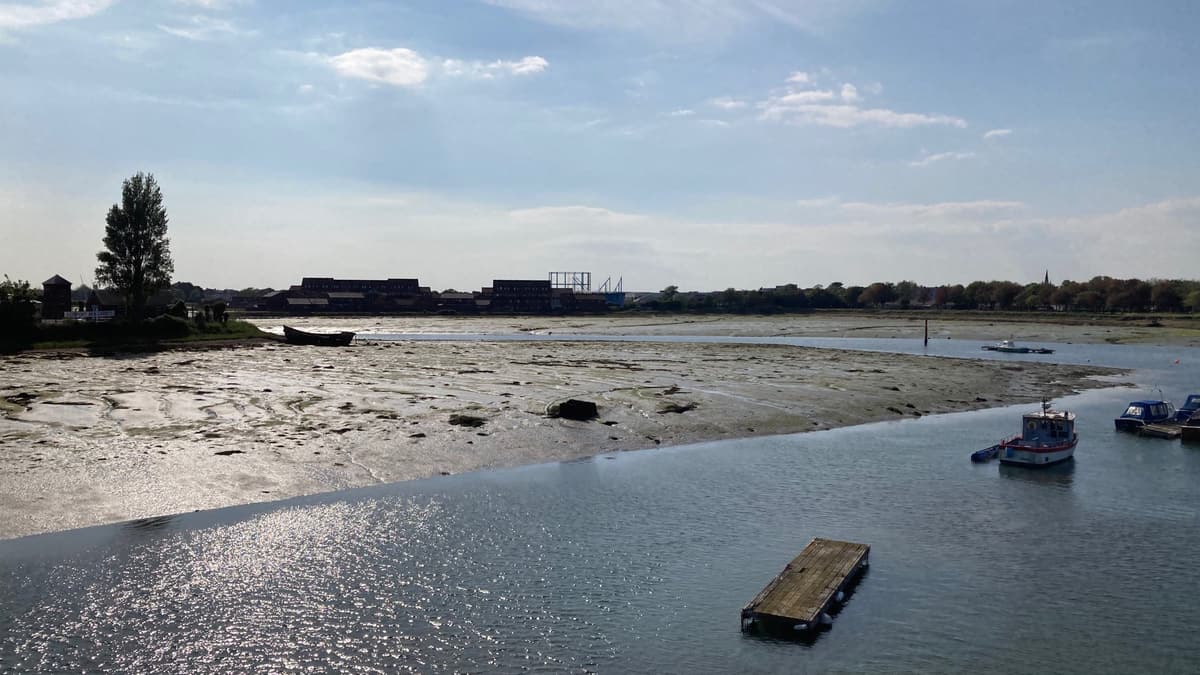
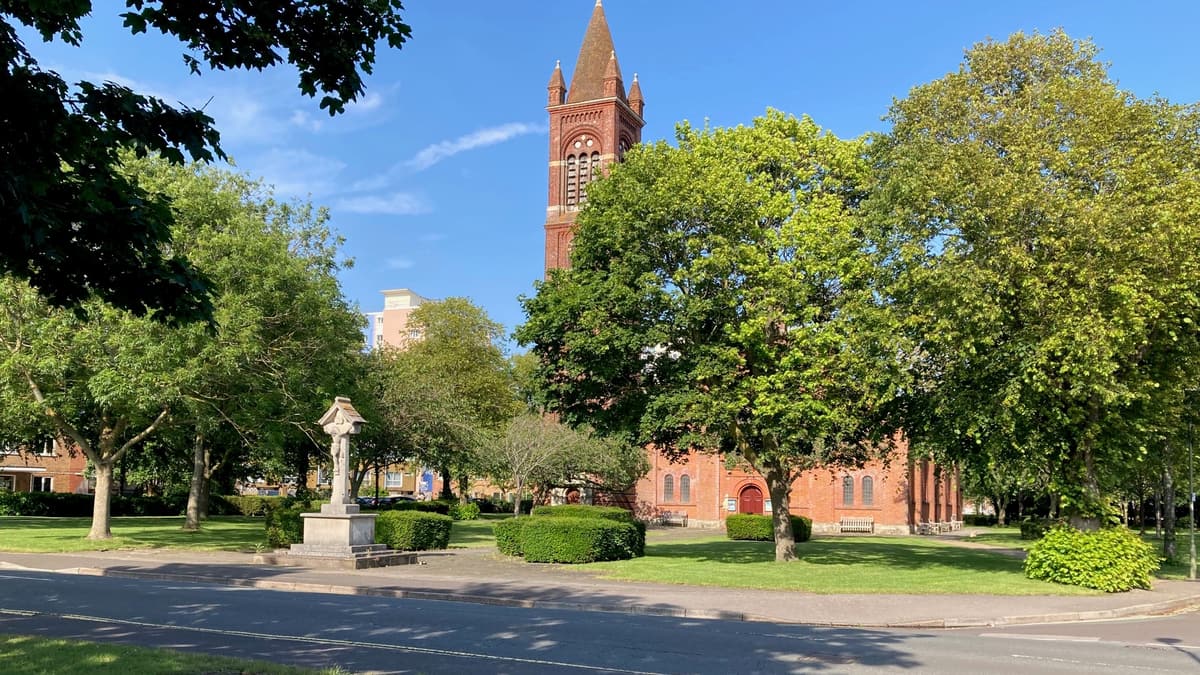
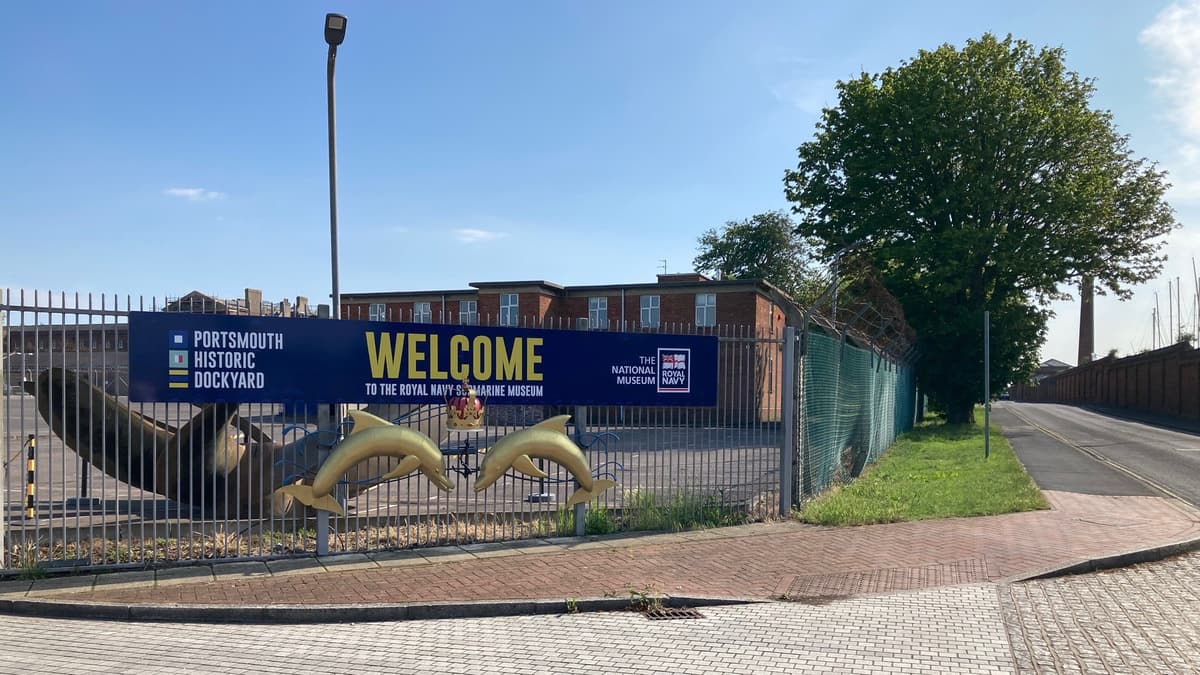
 Nearest Train (or tube) Station(s):
Nearest Train (or tube) Station(s):







